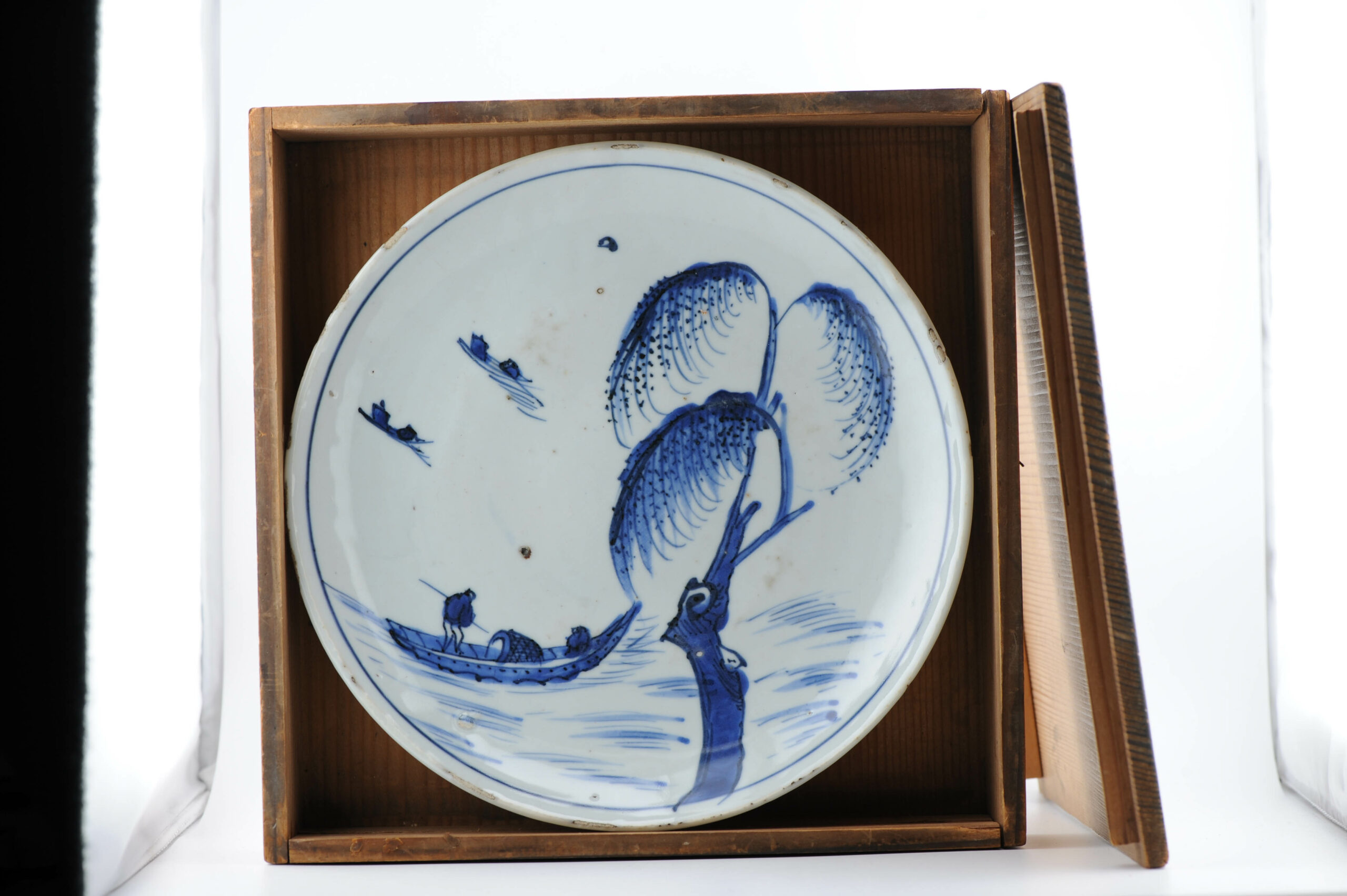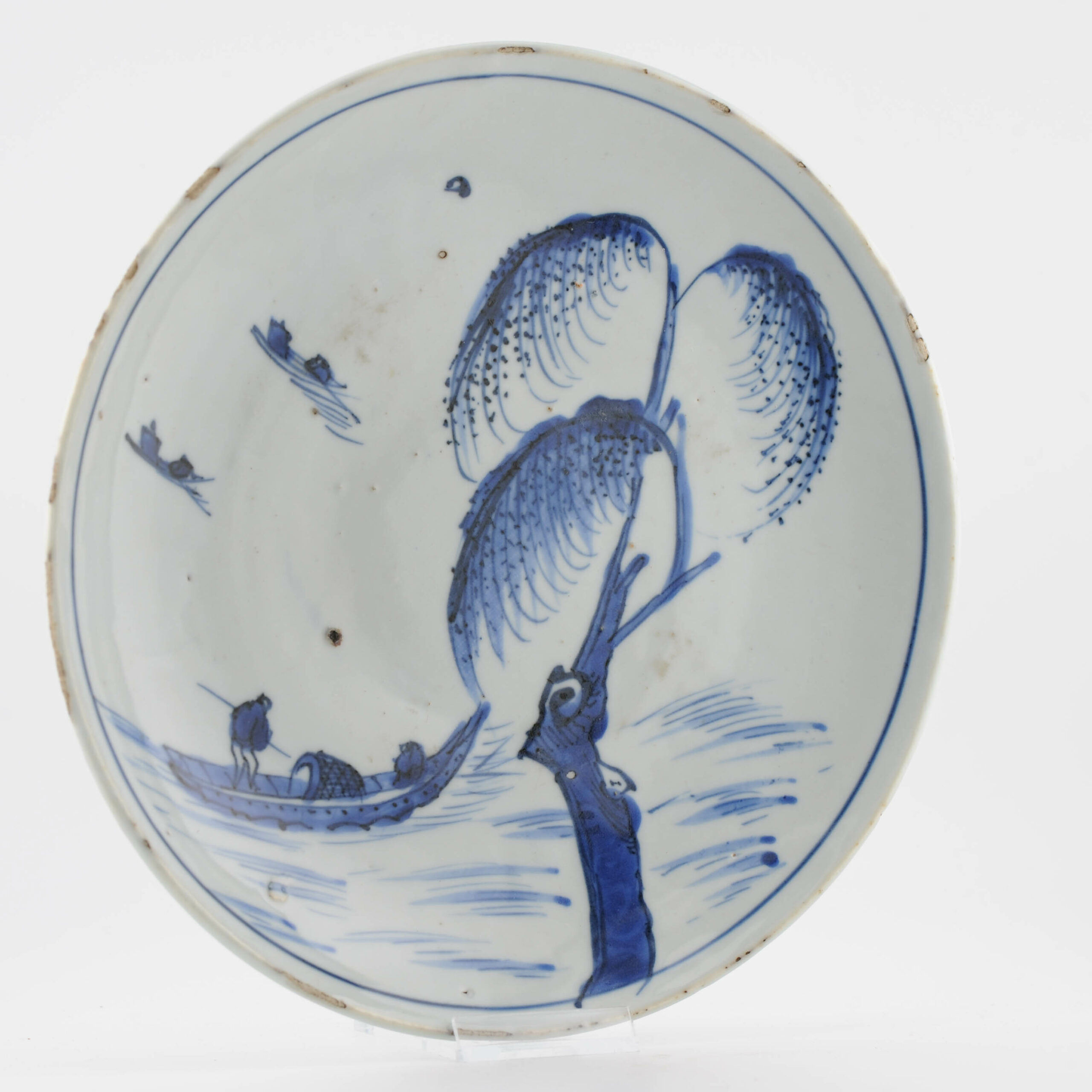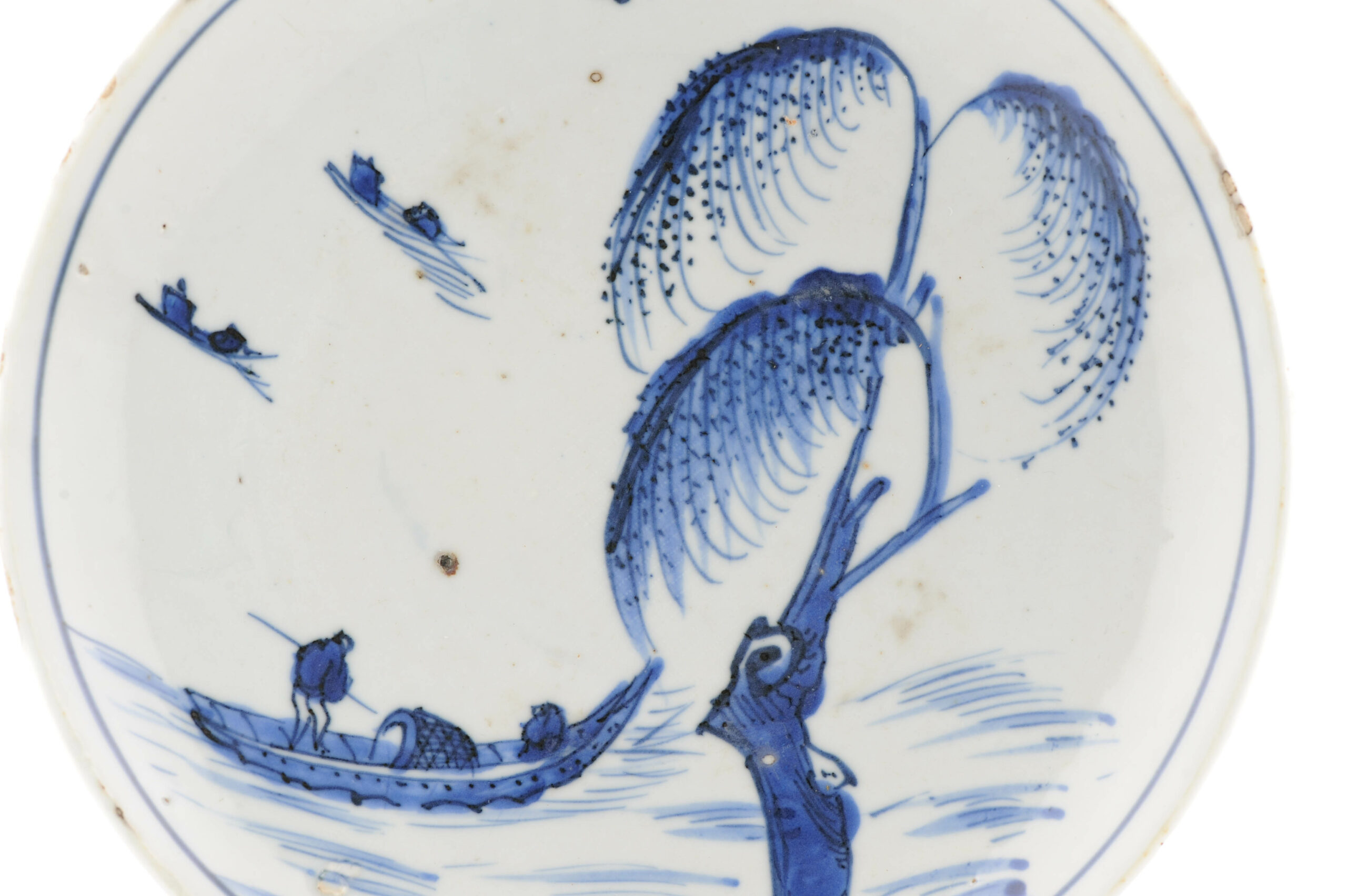Antique Ming Period Chinese Porcelain Dish Kosometsuke Fisherman
In stock
Condition Report: typical rimfritting only. Size: 21.5x3.6CM DiameterxHeight
Ko-Sometsuke or
“Old Underglaze Blue Porcelain”
There are many ceramic enthusiasts in Japan who have long believed that the blue and white porcelain ware called Ko-sometsuke or “Old Underglase Blue Porcelain” was produced in Japan. This large group of porcelain ware with its variety of forms and designs has been commonly utilized as food containers as well as tea ceremony utensils. In the early 19th century, following the Bunka (1804-1817) and Bunsei (1818-1829) eras of the Edo Period (1603-1868), porcelain kilns throughout Japan copied the forms and designs of these earlier blue and white porcelain ware and produced an assortment of eating and drinking vessels. From the aesthetic standpoint the o-somefswke has been accepted as a Japanese ceramic ware.
Through continued research, it has been discovered in recent years that the Ko-sometsuke, similar to Shontui, Fuyo-de, Gosu-Sometsuke and Gosu-akae (Note: All are specific styles and types of Chinese underglaze blue wares, some with overglaze enamel colors.) have influenced Japanese ceramics all at approximately the same period. These blue and white wares were produced in the folk ceramic kilns in China, and became important export items. A large amount of them were exported to Japan. It would, of course, be impossible to estimate the total number of these items in Japan today. The name Ko-Sometsuke is a name given to the old underglaze blue porcelain by followers of the Japanese tea ceremony and by the literati, and is not an academic terminology.
Most of the underglaze blue porcelain wares described above were produced during the later years On the Ming Dynasty (1368-1644), namely during the Tianqi (1621-1627) and Chongzheng (1628-1644) eras. The majority of these wares was produced in the folk ceramic kilns at Jingdezhen. However, they are placed in separate categories from the underglaze blue porcelain ware such as the Gosu-de produced in folk ceramic kilns near Swatow in Fukien Province. Others include the Shonsui and Fuyo-de produced in the folk ceramic kilns at Jingdezhen around the same period. Not only were these objects custom-made according to specific orders from Japan, but they were intermixed with the everyday utensils for the common people in those areas. Therefore, by collecting, studying and researching these Ko-Sometsuke pieces which exist in Japan, we are able to examine one facet of the tea ceremony art of Japan. Further, we are better able to grasp the special features and characteristics of the porcelain works produced in Chinese folk ceramic kilns. It is important that such research be continued to clarify these facts.
With thanks to Kyoto Shoin Kosometsuke book
——————————————————————————————————————
Important information
Auction
We start an auction every week, a nice opportunity to buy pieces for good prices;
https://www.ebay.com/str/antiquefromshangrila?LH_Auction=1
Combined shipment
We combine shipment and have over 2500 fixed listings in store, always good to
take a look if you see other items you like to save some shipping and mother nature:
https://www.ebay.com/usr/theceramics_and_collectibles
All will be packed neat and sent track and trace and insurance. Registered airmail.
Packages are always shipped on the next wednesday.
If there is a specific hurry please contact us.
Offers
All fixed items are open for offers, please feel free to make an offer and we will
respond as soon as possible.
Payment
Payment of items should be done within 5 days after the auction ends, or update us
on later payment. It’s all about good communication.
——————————————————————————————————————
Additional Information
| Weight | 4 kg |
|---|---|
| Type | |
| Primary Material | |
| Region of Origin | |
| China Dynasty Period | |
| Decoration Type / Colour | |
| Century | |
| Material | |
| Emperor | |
| Condition Report |















